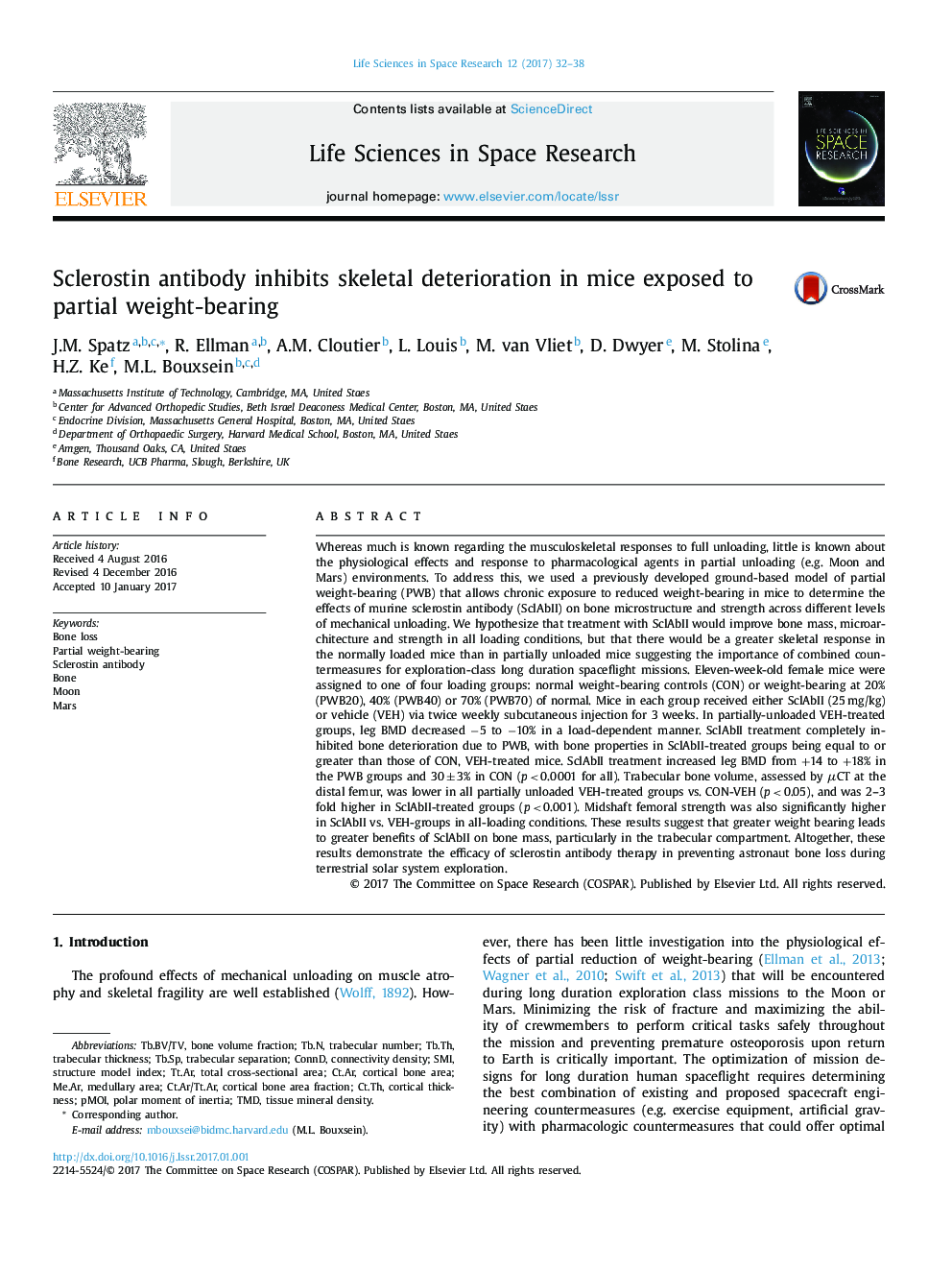| Article ID | Journal | Published Year | Pages | File Type |
|---|---|---|---|---|
| 5498090 | Life Sciences in Space Research | 2017 | 7 Pages |
Abstract
Whereas much is known regarding the musculoskeletal responses to full unloading, little is known about the physiological effects and response to pharmacological agents in partial unloading (e.g. Moon and Mars) environments. To address this, we used a previously developed ground-based model of partial weight-bearing (PWB) that allows chronic exposure to reduced weight-bearing in mice to determine the effects of murine sclerostin antibody (SclAbII) on bone microstructure and strength across different levels of mechanical unloading. We hypothesize that treatment with SclAbII would improve bone mass, microarchitecture and strength in all loading conditions, but that there would be a greater skeletal response in the normally loaded mice than in partially unloaded mice suggesting the importance of combined countermeasures for exploration-class long duration spaceflight missions. Eleven-week-old female mice were assigned to one of four loading groups: normal weight-bearing controls (CON) or weight-bearing at 20% (PWB20), 40% (PWB40) or 70% (PWB70) of normal. Mice in each group received either SclAbII (25 mg/kg) or vehicle (VEH) via twice weekly subcutaneous injection for 3 weeks. In partially-unloaded VEH-treated groups, leg BMD decreased â5 to â10% in a load-dependent manner. SclAbII treatment completely inhibited bone deterioration due to PWB, with bone properties in SclAbII-treated groups being equal to or greater than those of CON, VEH-treated mice. SclAbII treatment increased leg BMD from +14 to +18% in the PWB groups and 30â±â3% in CON (p <â0.0001 for all). Trabecular bone volume, assessed by μCT at the distal femur, was lower in all partially unloaded VEH-treated groups vs. CON-VEH (p <â0.05), and was 2-3 fold higher in SclAbII-treated groups (p <â0.001). Midshaft femoral strength was also significantly higher in SclAbII vs. VEH-groups in all-loading conditions. These results suggest that greater weight bearing leads to greater benefits of SclAbII on bone mass, particularly in the trabecular compartment. Altogether, these results demonstrate the efficacy of sclerostin antibody therapy in preventing astronaut bone loss during terrestrial solar system exploration.
Keywords
Ct.ArCt.Ar/Tt.ArTt.ArCt.ThTMDSMITb.NTb.SpTb.ThPartial weight-bearingSclerostin antibodyBone lossBoneconnectivity densityTissue mineral densitytrabecular separationMarsStructure model indextrabecular numbertrabecular thicknesscortical thicknesspolar moment of inertiaMoonCortical bone areaBone volume fractiontotal cross-sectional area
Related Topics
Physical Sciences and Engineering
Earth and Planetary Sciences
Space and Planetary Science
Authors
J.M. Spatz, R. Ellman, A.M. Cloutier, L. Louis, M. van Vliet, D. Dwyer, M. Stolina, H.Z. Ke, M.L. Bouxsein,
